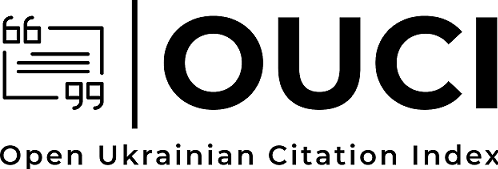UNITED STATES IMAGE IN POST-SOVIET UKRAINE: SOVIET HERITAGE AND ITS MANIFESTATIONS IN CURRENT POLITICS (ON THE EXAMPLE OF ORANGE REVOLUTION 2004)
DOI:
https://doi.org/10.28925/2524-0757.2016.2.25Keywords:
Soviet heritage, Soviet political stereotypes, ideology, image of the “Enemy”, Orange RevolutionAbstract
One of the main components of Soviet foreign policy and ideology was the perception of the U.S. as the main “Enemy”. This had a great impact on the forming of a stable negative image of this country in minds of the Ukrainians and other Soviet nations. After the collapse of the Soviet Union, with the beginning of transition to democracy, image of the USA radically changed. But as it occurred in 2004 during the Orange revolution “Soviet heritage” of negative attitude towards the USA is still presented and actively used by pro-Russian forces. The aim of the research is to generalize the stereotypes and attitudes towards the United States in the independent Ukraine that remain from the Soviet time on the example of attitudes towards America
during the events of the Orange Revolution and right after it. In the article the author characterises the following consequences of the long-term dominance of the Communist regime in Ukraine: the conservation of the Soviet political stereotypes in the minds of many citizens; the political and civic apathy; fairly easy public obedience to the authorities; nostalgia for the Soviet past among a certain segment of the Ukrainian population. There was illuminated anti-American rhetoric, which was actively used by the representatives of leftist political forces — namely Communist Party of Ukraine (CPU), the Progressive Socialist Party of Ukraine (PSPU) and others. Clear anti-American policy was presented in the election programs of these parties.
With the purpose to attract the attention of their followers, they used the ideological clichés, widespread in the days of the Soviet Union, such as “NATO — aggressive block”, “politics of imperialist globalization”, “affi rmation of hegemony”, “armed aggression”, “redrawing of borders”, “neo-colonialists” etc. In the program of the Communist Party special attention was paid to the U.S. foreign policy and its “basic techniques”: “inciting nationalism”, “provocation of the “democratic”, “velvet”, “‘color’ revolutions”, “the establishing of the puppet regimes in the sovereign states”. The author concludes that during the revolutionary events in 2013–2014 the opponents of the democratic movement again resorted to use the stereotypes of the Soviet era, where the great role was played by the anti-American slogans. In 2004 the elderly people mainly supported anti-American slogans, but during the events of 2013–2014 pro-Russian youth joined this group. Soviet stereotypes and especially negative attitudes towards the United States still remain in the minds of a certain number of Ukrainians.
Downloads
References
Hlossariy po politicheskoi psikhologii, Moskva, 1996. http://vocabulary.ru/dictionary/8/word/stereotip
Postanova Verkhovnoi Rady Ukrainy «Pro Osnovni napriamy zovnishnioi polityky Ukrainy». http://zakon4.rada.gov.ua/laws/show/3360-12
Prohrama Komunistychnoi partii Ukrainy. http://www.slovnyk.ua/services/translit.php
Prohrama Prohresyvnoi sotsialistychnoi partii Ukrainy. http://vitrenko.org/article/456
Sotsiological Surveys of the Alexander Razumkov Centre. http://www.razumkov.org.ua/ukr/socpolls.php
Ukrainske suspilstvo 1992–2013. Stan ta dynamika zmin. Sotsiolohichnyi monitorynh, V. Vorona, M. Shulha (red.), Kyiv 2013.
Published
How to Cite
Issue
Section
License
Copyright (c) 2016 Валерія Покляцька

This work is licensed under a Creative Commons Attribution-NonCommercial-ShareAlike 4.0 International License.
Authors who publish in this journal retain the right of authorship of the work and give to the journal right of first publication of this work under the conditions of Creative Commons: Attribution-NonCommercial-ShareAlike 4.0 International (CC BY-NC-SA 4.0), which allows others freely distribute the work published with reference to the authors of the original work and the first publication of this magazine.














